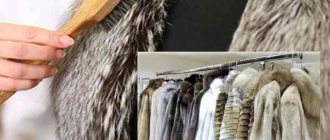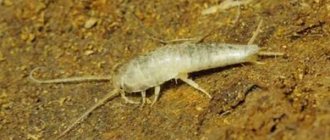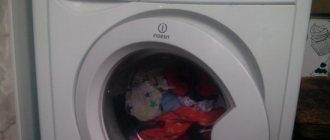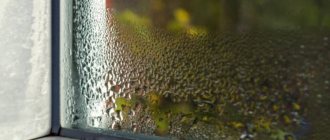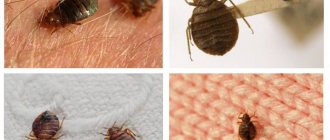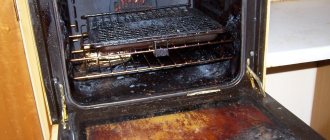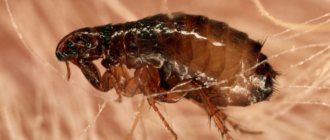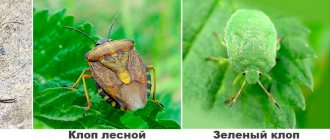The dream of every housewife is to get rid of dust forever.
But miracles don't happen. Even after general cleaning, microscopic particles return to their usual place, encroaching on the most precious thing - the health of household members. There is an exit. The amount of dust can be kept to a minimum. This requires a systematic integrated approach, faithful assistants, a vacuum cleaner and a rag, and tips from experienced housewives.
We’ll tell you in this article how to properly wipe off dust, what products to use, and how to remove dust particles from the air.
Origin of dust
Scientists have calculated that forty-three million tons of dust settle on American territory every year. More than seventy percent is dust of natural origin. The remaining thirty percent is that which appears as a result of human activity. Its main producers are:
- the soil;
- oceans - small drops of water rising into the air, when evaporating, saturate the atmosphere with salt crystals;
- volcanoes, forest fires - constant fires and eruptions on different continents of the planet throw more than fourteen million tons of dust and ash into the air;
- Sahara Desert - air currents lift and spread around the world more than one hundred and ninety million tons of sand dust;
- space – the remains of comets or meteorites that have flown by or burned up in the atmosphere settle on the planet;
- pollen.
Even in an apartment with tightly closed windows and no occupants, more than ten thousand dust particles accumulate on one square centimeter of floor and furniture surfaces in half a month.
Folk methods of struggle
Modern housewives, despite the abundance of special household products, quite successfully use folk methods of cleaning.
The first place in the list of popular home remedies for cleaning an apartment is occupied by ordinary table vinegar. Experienced housewives use a special solution to wipe furniture, household and kitchen appliances: a glass of water, 0.5 tsp. vinegar, 2-3 drops of essential oil. Vinegar essence is added to water when rinsing clothes, soaking cloths for wiping, or washing floors.
Another universal and cheap folk remedy is soda . It is used for cleaning carpets, removing stubborn dirt on the surface of a gas stove, kitchen sink. Washing the bathroom and walls in the bathroom is done with a vinegar-soda solution of 120 g of vinegar and 80 g of soda.
We fight dust with the help of devices
Consultants working in household appliance stores will advise you on how to deal with dust in your apartment. Devices that significantly facilitate this process are presented in several types:
- vacuum cleaner - must have a wet air filtration function so that dust does not rise after cleaning;
- air humidifiers - such devices, having built-in programs, instantly saturate the dry air of the apartment with moisture and will not allow dust particles to fly;
- hygrometer - this device will show the level of humidity in the apartment.
How to wipe furniture to prevent dust from settling?
To care for furniture, compositions containing antistatic agents are used. The small electrical charge of dust particles is attracted to the surface of furniture or household appliances.
Antistatic agents reduce the level of static electricity and prevent dust from settling on objects.
Polish allows you to protect against plaque and also add shine to lacquered interior parts. For household appliances, antistatic agents are used that can clean electronics from dirt without additional wiping.
The active components of special sprays can not only remove dirt, but also get rid of dust mites. It is recommended to use aerosols no more than twice a year.
The composition is used to treat indoor walls, textile elements, and carpets. Impregnation is sprayed onto upholstered furniture, which creates a protective film against dust particles.
Important! Chlorine-containing products, as well as solutions containing phosphates, ammonium, triclosan, cause itching, redness on the skin, and irritation of the respiratory tract. Cleaning using household chemicals is carried out wearing gloves and a protective mask.
Plants for dust control
A large number of plants do an excellent job of purifying the air in an apartment, collecting dust and other particles that harm residents. How to deal with dust in an apartment? Tips will help you identify plants that help with this:
- Chlorophytum. Absorbs substances toxic to humans in the air, including: carbon monoxide, formaldehyde.
- Ficus benjamina, aloe. Copes with toxic compounds emitted by plastic products and furniture.
- Spathiphyllum. Cannot be replaced in the fight against mold, formaldehyde and trichlorethylene elements.
- Geranium, citruses, bay laurel. Destroy pathogenic microbes, viruses, substances, bacteria.
- Mother-in-law's tongue. Fights nitrogen oxides.
- Gerbera, dracaena. They absorb benzene, trichlorethylene and carbon dioxide, releasing oxygen.
- Cypress. Attracts negative ions that are present in the air from electrical appliances and produces positive ions.
- Begonia. Humidifies the air, kills fungi and germs, reduces the harmful effects of electrical appliances.
- Dieffenbachia. It can deal with staphylococci, as well as toxic compounds (toluene and xylene) that are emitted by varnished surfaces.
- Scheffler. Absorbs smoking tar and nicotine, purifying the air for residents.
Algorithm for proper cleaning
Cleaning begins with putting things in their places. Items that are not regularly used are put away in cabinets, pantries, and shelves. Before removing or packing, dust must be removed from things:
- wipe;
- wash;
- vacuum;
- knock out.
To avoid mold, shoes, clothes, carpets, and soft toys should be dried, preferably in the sun. After tidying up the interior, you need to vacuum the floors so that dust does not rise into the air during cleaning.
Anti-dust treatment begins with textiles:
- curtains;
- curtains;
- bed linen;
- upholstered furniture;
- toys.
They are washed or treated with a steam generator.
Carpets and rugs are washed with foam and dirt is removed with a vacuum cleaner. The cleaning procedure can be carried out outdoors. It is easier to remove dust from dried products.
The next stage of cleaning is the most inconvenient. Need to wipe:
- corners and space between walls behind the refrigerator, cabinets, washing machine;
- ceiling;
- cornices;
- the top of the cabinets.
Whitewashed ceilings are brushed or vacuumed. Dust from the walls can be brushed off with a broom, sockets and switches are wiped, ventilation grilles are washed.
Then washed:
- doors (indoor and outdoor);
- pens;
- windows and window sills;
- chandeliers, sconces, table lamps;
- air conditioning filters;
- air conditioner;
- hood;
- mirrors;
- body of a refrigerator, washing machine.
Wipe clean using polishes or surface sprays:
- shelves (internal and external);
- furniture doors, walls;
- computer monitors;
- TV screens.
Leaves of indoor flowers are cleaned of dust. Give moisture-loving plants a shower. Before the final cleaning procedure, dirt is removed from under the beds. They vacuum again. The filters of the device are washed/replaced. All parts and surfaces of the vacuum cleaner are wiped. Wet cleaning is done throughout the entire room.
Dust collectors in an apartment setting
When you are in your own home, you involuntarily notice that there is a lot of dust in the apartment. How to deal with it if the devices don’t help much? First of all, it is necessary to review the things that are placed in cabinets and bedside tables and, if possible, get rid of or replace them, namely:
- throw away or reduce the number of carpet products - you can leave them for beauty and comfort, if only you can vacuum them often;
- an incredibly large number of figurines, decorative crafts, pictures and napkins - you need to put them in one place (closet or box);
- items that are not used should be removed or thrown away;
- thick curtains, heavy curtains - must be replaced with wooden or plastic blinds;
- If possible, remove woolen interior elements, and replace the down or feather that is in the cushions or seats with synthetic filler.
Clean car and house after renovation
Cleaning will help you get rid of dust in your car, just like in your apartment. You should wash your car not only from the outside and inside, but also under the hood and in the trunk. Pay special attention to air conditioners that are cleaned in service centers. You can reduce the number of microparticles settling on the surface of your car using polishes, special wax and other household products.
It is especially important to remove construction dust after repairs, because the remnants of dirt settled on the surface will remind you more than once. That is why, before starting work, it is better to remove all the furniture from the room or, in extreme cases, cover it with film, newspapers or old cloth. The room where repairs are taking place must be closed. Additionally, the door should be hung with a dampened curtain or at least a damp cloth underneath.
It is much easier to wipe off the remaining dust using available home remedies:
- You need to stir a few tablespoons of sunflower oil in heated water and wash the entire room with the prepared solution. Then these same surfaces are additionally wiped with an aqueous solution with the addition of a small amount of vinegar.
- The easiest way to remove construction dirt is with plain water and an active detergent. For greater effect, the washed surface should also be wiped with a solution prepared from half a glass of salt and a bucket of water. You can also use potassium permanganate, diluted to a rich pink color.
- Universal chemicals such as Amway or Domestos will also help remove repair dust if diluted according to the instructions in warm water. Cleaners from the “Mr. Muscle” series are suitable for cleaning floors.
- Lime and gypsum dust are wiped with Probel.
Household chemicals - cleaning assistant
You can find a lot of special household chemicals on store shelves. The most popular products solve the problem of how to deal with dust in an apartment effectively and quickly.
Furniture polish, in most cases, has an antistatic effect. When using this product for cleaning premises, the amount of dust particles settles much less. This effect is caused by a smooth surface. After use, the furniture shines and there are no streaks on it.
Wipes with antibacterial impregnation perfectly clean and disinfect any objects in the apartment. Using them, they rub furniture, adding shine. They are ideal for glass and plastic products, mirror surfaces, computer and digital equipment.
A special spray that removes dust from household appliances. This product removes dust deposits from televisions, desktop computers, keyboards, scanners, printers, and cameras. Despite being connected to the network, such a spray can be used on operating equipment.
The dust mite spray also does an excellent job of cleaning and eliminating allergens. Just one treatment of soft furniture surfaces, carpets, mattresses, blankets, curtains guarantees protection against parasites for six months.
Preventing the settling of dust particles
To reduce dust accumulation on the surface, it is necessary to follow simple rules whenever possible:
- Regularly get rid of unnecessary things (old clothes, bedding, dishes in closets, souvenirs, etc.).
- In repairs, use finishing materials that are easier to handle dry and wet and retain less dust (linoleum, vinyl wallpaper, suspended ceilings).
- Store the library behind tightly closed cabinet doors, preventing the spread of microparticles accumulated in the books.
- Pack clothes in trunks and covers, clean and ventilate them before storage.
- Don't leave windows open all day. Ventilation and constant access of air from a dusty street are two different things.
- Check the condition of the seals on the entrance door to reduce the influx of dust particles from outside.
- Keep shoes clean.
- Carry out dry and wet cleaning regularly.
An important component in maintaining cleanliness is surface treatment with special products with an antistatic effect.
Mebelux
Wax-based polish for wooden surfaces. An inexpensive product for adding shine to furniture with an antistatic effect. Price for 300 ml 135 rubles. Read reviews here, here and here.
Chirton Classic
Wax-based spray polish with an antistatic effect in the form of a spray. Takes care of furniture and removes dirt. Price for 500 ml from 120 rubles. Read reviews here, here and here.
Emsal
German furniture cleaner with antistatic agent. Cares, protects and prevents dust accumulation. Price for 265 ml from 250 rubles. Read reviews here.
The right choice of household chemicals and an integrated approach to cleaning the house will give results. There will be much less dust.
Do-it-yourself dust control products
Many people do not trust ready-made cleaning products. How to deal with dust in an apartment? Homemade tips for preparing remedies will definitely help:
- Carpet cleaner. Pour 1 liter of water into two glasses of baking soda, four bay leaves, and a pinch of cinnamon or cloves. Treat the carpet with the solution. Vacuum after a few hours. Baking soda will remove dust and dirt accumulated in the carpet, while spices leave a light aroma and disinfect.
- Bathroom cleaner. Add half a glass of soda to a glass of vinegar. Mix these ingredients and apply to surfaces. Wash off after fifteen minutes, after rubbing the treated areas.
- Cleansing wipes. We cut old things into neat rags. Pour one fourth of the vinegar into a glass container, then add water. Add a few drops of any essential oil to the aromatization solution and lower the napkins. Close the lid tightly. These cloths should be used to wipe household appliances and kitchen items.
- Furniture cleaner. Add one-fourth of vinegar to a glass container under a lid, then fill to the top with any vegetable oil. Add the juice of half a lemon or one tablespoon of prepared lemon juice. Store the liquid in the refrigerator. Shake before use.
How to get rid of dust
The most important way to keep dust at bay is to dust regularly with the right tools. This:
- microfiber cloth;
- microfiber cloth with pole;
- vacuum cleaner with hose.
With your supplies at the ready, it's time to start cleaning. Follow these steps to start de-dusting your home:
- Start from top to bottom. Use a microfiber cloth with a pole to remove dust that is too hard to reach in places like the ceiling and work your way down to the floor.
- Use a vacuum cleaner with a hose to get rid of dust from fans, corners and upholstery. Wipe and clean the blinds.
- Dampen a microfiber cloth and wipe dusty surfaces at eye level.
Wipe the stuff off electronics, vents, cords, and other places where dust collects.
Clean your floors regularly
In addition to dusting all surfaces in your home, you need to make sure the floors are clean. For parquet or laminate floors:
- Remove and put away any clutter such as scattered toys, magazines, books that may collect dust.
- Instead of a broom or duster, opt for a mop or damp cloth to remove dirt from the floor rather than moving it around or lifting it into the air.
If you have a vacuum cleaner designed for wood or laminate floors, you can also use it to remove dirt and then wipe them with a damp microfiber cloth to get rid of persistent dust.
Buy foot mats
Every time guests come from outside, they bring dirt into the house, and small particles are the main component of dust. Use both outdoor and indoor rugs, especially those with bristly tops, to trap dirt and prevent it from moving further into your home. Wash or vacuum rugs regularly to prevent buildup.
Improved pet care
Dead skin cells and lost hair are a major source of dust and, unfortunately, our furry friends "produce a lot of hair." Groom your pets regularly to prevent the buildup of dead skin and pet hair. As a bonus, you (and your pets) will feel better too. Keeping the trash drawer closed will also help keep dust out.
Keep your windows closed
It may seem counterintuitive, but opening windows actually increases the amount of dust in your home. It comes through doors and windows in the form of pollen, mold spores and air pollutants that create the significant buildup you see on window sills. Keeping the windows closed, especially on windy days, will minimize the problem.
Avoid carpets at home
Getting rid of carpet may seem like a drastic measure, but carpet holds a lot of dust and releases it into the air every time you take a step. If you're thinking about redecorating, consider installing some type of hard surface flooring. Wood, tile, stone or vinyl are all good alternatives to carpeting and are much easier to keep dust-free.
Clean the pillows
Even if you wash your sheets and pillowcases every week, dust mites can still live inside your pillows. Using a mild detergent, wash them by hand or in the washing machine, then dry and fluff them up. Or take them to the dry cleaner. Whichever route you choose, you'll be able to breathe easier before bed.
Wet cleaning
Never underestimate the power of water. A good wet mopping and dusting will go a long way towards eliminating 90% of the dust in your home, and plain water is about as eco-friendly a cleaning solution as you can find. A damp cloth or mop will capture and hold the dust, which can then simply be washed down the drain.
Static electricity
The static electricity that builds up inside your home when rooms are dry actually attracts dust and causes it to stubbornly cling to surfaces. Solution? Install a humidifier, whether it's a whole-house model or a single-room version. Ideally, you should aim for a relative humidity of 40 to 50% throughout your home to eliminate static and reduce dust levels.
Curtains
It's not just the floors that need to be vacuumed. How often do you clean your curtains? Or vacuuming the sofa? Shade? The soft fibers in these areas attract a lot of dust. Whether you choose steam cleaning or dry vacuuming, regularly dusting your textiles is a must for a home without one.
Blinds also need cleaning
Don't think you've solved your dust problem just because you replaced your fabric window coverings with blinds. Dust is attracted to them like moths to a flame, so you should clean them regularly.
Install an air purifier
Air purifiers come in a variety of shapes and sizes, from solid units to small, portable single-room models. The most common types consist of a fan that sucks in air and a filter that traps dust and other unsafe particles.
Vacuum properly (and regularly)
A good vacuum cleaner is the best weapon in your home arsenal for eliminating dust. Thorough vacuuming once a week or once a day will go a long way in eliminating dust. Many new bagless models come with built-in filters that trap even smaller dirt particles and help freshen the air.
Store things in bags
Scattered cotton and polyester fibers from clothing, bedding and pillows can be a major source of dust. The solution to both closet clutter and drifting dust particles is to bag your items. There are plenty of compact vacuum bags available at home improvement stores, but even some good old-fashioned garment bags can help cut down on dust from clothing and fabrics.
Replacing furnace filters
One of the most important ways to minimize dust buildup during the winter is to replace your furnace filter monthly. Furnace filters are an inexpensive way to clean the air and prevent dust from blowing back throughout your home. There are many types of furnace filters on the market, from inexpensive pleated paper filters to reusable electrostatic ones.
Change bedding weekly
Fibers from bedding create dust. But the biggest problem with bedding is that it traps all the dead skin particles from your body while you sleep. Wash your sheets once a week and your blankets and mattress pads every month or two to keep dust out of your bedroom.
Limit textiles
Textiles not only collect and hold dust, but also create it. Limit your pillows, blankets and other fabrics on your bed and other furniture to only what you need. To decorate window openings, choose the best option: give up traditional curtains and choose something less attractive to dust, such as roller blinds or Roman blinds, which are easy to wash or wipe clean.
Keep your closets organized
There are a lot of fabrics in the closet, and textiles shed fibers, contributing to the formation of dust in the house. Clean out your closets and only store what you need for the season in this space. Make sure there is enough space between items and shelves to regularly dust your closet as you clean your home.
Take off your shoes
Any dirt clings to the soles of your shoes. You will prevent dust and dirt from outside from entering your home if you and your guests place your shoes by the door when entering your home. It is better to offer slippers to everyone, so buy several pairs of “guest” house shoes for friends and acquaintances.
